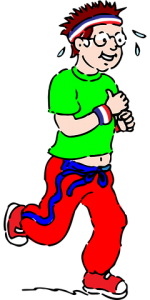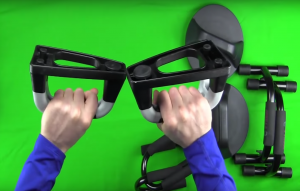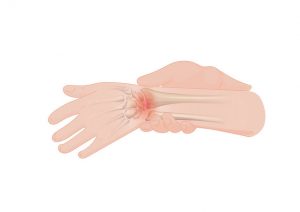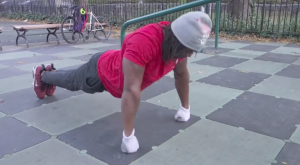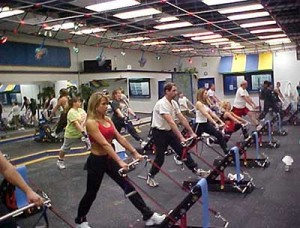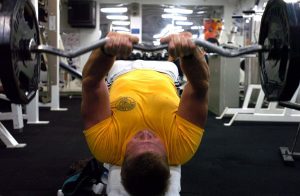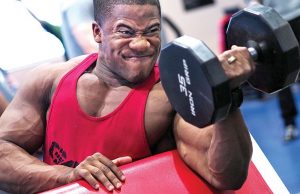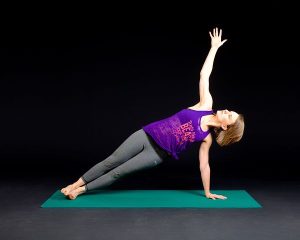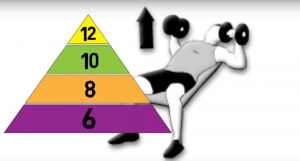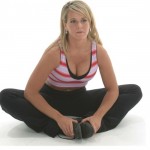So weights aren’t your thing, and you prefer to do all of your workouts in the cardio center. You should keep in mind that there are numerous benefits to resistance training, including stronger bones, enhanced fat burning, and a healthier heart, to name a few. Doing all cardio is a better option than no exercise at all, but there are little tweaks you can make to get the most out of your cardio-centered workouts.
Optimizing Your Stair Stepper Routine
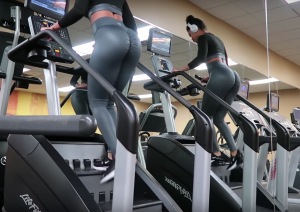
Stair mill-style steppers allow you to perform different types of step patterns to optimize your stair stepper routine. Image via Annabelle Hayes/YouTube
When the monotony of the stair machine has you feeling like you’re climbing to nowhere, try making one small change to your workout each week. For example, if the step machine you use is a stair mill, like a StairMaster, which has an actual rotating staircase, try skipping a step instead of stepping on every stair. According to GarageGymBuilder, skipping stairs is a great way to target your hamstrings and glutes. Alternatively, try standing sideways on your step mill and performing crossover steps, crossing your outside leg over the inside one to step onto the next stair. Turn around halfway through your workout so you can do crossover steps with the other leg.
If you don’t have access to a stair mill or prefer using the kind of stepper that has two foot pedals instead of a rotating staircase, you won’t be able to do as many alternative step patterns, but you can incorporate leg lifts into your workout. When you are stepping with your right leg and the right pedal is descending, kick back your left leg and hold it until the right pedal is at the bottom and it’s time to step on the left pedal with your left foot. Then, kick back your right leg as you step with your left foot.
Making the Most of the Treadmill
Raising the incline is how most people bump up their treadmill workout, but there are other ways to get more out of a treadmill session. PopSugar suggests pumping your arms as you jog or run instead of holding onto the handles. You could also perform walking lunges to include a little leg toning work with your cardio. You’ll have to use a slower setting, but the intensity of the move will make up for the slower pace. Additionally, you could wear ankle weights or a weighted vest as another alternative to enhance your treadmill workout. They can also be worn while using an elliptical trainer to increase intensity along with calorie burn.
Raising the Bar on the Rowing Machine
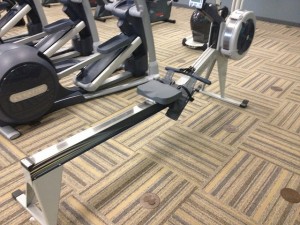
Alternating intervals of varying speeds is just one way to raise the bar when working out with a rowing machine. Image by Clay Manley
If you think adjusting your speed is the only way to change up a rowing machine workout, you got another thing comin’. DailyBurn offers up a handful of ways to make the rowing machine more effective and interesting by alternating short rests with various intensity rowing. For instance, when you pyramid row, you’ll increase each rowing and rest interval by 60 seconds until you’re up to 4 minutes, then decrease resting and rowing until you’re back down to 1 minute each. Leapfrog rowing involves alternating 1-minute sprint and rest intervals, but you’ll also alternate your rowing speed during sprint intervals between moderate and maximum effort.
Increase Benefits With Intervals
Naturally, high-intensity intervals are another way to chase the blahs away and rev up cardio equipment workouts no matter what type of equipment you’re using. HIIT training is an excellent workout technique that can breathe new life into your same-old-same-old routine and help you get over a plateau. The easy way to convert your cardio equipment workout into HIIT is to simply alternate 30 to 45-second intervals of maximum effort with 10 to 15-second intervals of slower-paced rest periods. Self offers up a quick and intense alternative stair stepper HIIT that involves doing double steps for a minute, leg lifts for a minute, and single steps for a minute, all at various resistance levels. You get a 60-second recovery interval every 6 minutes to keep you going.
And remember to always include a warm-up and cool-down with your workouts!

